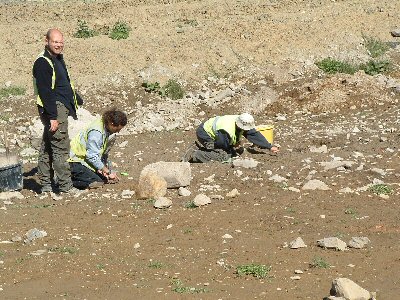The first metal-workers came here c. 4000 years ago and the nature of the burials changes with them. In place of large communal burial chambers there were individual burials in small pits and stone cists, sometimes covered with a round cairn. Such a cairn with two cists survives on the North summit of Slieve Gullion.
It is believed that standing stones, such as that at Ballard (near Lislea) are also dated from the Bronze Age people in
Strangely the Iron Age (~ c. 250 BC – 400 AD) people are poorly represented in the archaeology of
Also the famous Dorsey dates from then. It consists of the remains of two roughly parallel, massive earth banks and ditch ramparts over a mile long which lies astride an old routeway to Emain Macha (Navan Fort). One piece of the Dorsey can be viewed today in the immediate vicinity of Cullyhanna. Its building was contemporaneous with a major phase of activity at Navan.
Fragments of another similar earthworks known locally as the Dane’s Cast can be viewed at several locations in our neighbourhood, notably to the left before you climb the small rise a mile to the north of Meigh village (Aghayolloga). These large scale linear fortifications (said to stretch from east to west coast – near Sligo) were originally thought to have been built as defensive features, to prevent cattle raids or large-scale human incursions and when you recall Queen Maeve’s raid into
…. more later …
